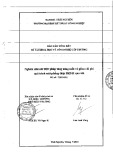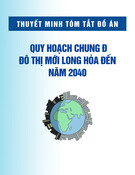
BioMed Central
Page 1 of 6
(page number not for citation purposes)
Implementation Science
Open Access
Research article
An exploration of how guideline developer capacity and guideline
implementability influence implementation and adoption: study
protocol
Anna R Gagliardi*1, Melissa C Brouwers2, Valerie A Palda3, Louise Lemieux-
Charles4 and Jeremy M Grimshaw5
Address: 1Toronto General Research Institute, 200 Elizabeth Street, 13EN-235, Toronto, Ontario, M5G2C4, Canada, 2McMaster University, 1280
Main Street West, Hamilton, Ontario, L8S4L8, Canada, 3St Michael's Hospital, 30 Bond Street, Toronto, Ontario, M5B1W8, Canada, 4University
of Toronto, 155 College Street, Toronto, Ontario, M5T3M6, Canada and 5Ottawa Health Research Institute, 725 Parkdale Avenue, Ottawa,
Ontario, K1Y4E9, Canada
Email: Anna R Gagliardi* - anna.gagliardi@uhnresearch.ca ; Melissa C Brouwers - mbrouwer@mcmaster.ca;
Valerie A Palda - va.palda@utoronto.ca; Louise Lemieux-Charles - l.lemieux.charles@utoronto.ca; Jeremy M Grimshaw - jgrimshaw@ohri.ca
* Corresponding author
Abstract
Background: Practice guidelines can improve health care delivery and outcomes but several
issues challenge guideline adoption, including their intrinsic attributes, and whether and how they
are implemented. It appears that guideline format may influence accessibility and ease of use, which
may overcome attitudinal barriers of guideline adoption, and appear to be important to all
stakeholders. Guideline content may facilitate various forms of decision making about guideline
adoption relevant to different stakeholders. Knowledge and attitudes about, and incentives and
capacity for implementation on the part of guideline sponsors may influence whether and how they
develop guidelines containing these features, and undertake implementation. Examination of these
issues may yield opportunities to improve guideline adoption.
Methods: The attributes hypothesized to facilitate adoption will be expanded by thematic analysis,
and quantitative and qualitative summary of the content of international guidelines for two primary
care (diabetes, hypertension) and institutional care (chronic ulcer, chronic heart failure) topics.
Factors that influence whether and how guidelines are implemented will be explored by qualitative
analysis of interviews with individuals affiliated with guideline sponsoring agencies.
Discussion: Previous research examined guideline implementation by measuring rates of
compliance with recommendations or associated outcomes, but this produced little insight on how
the products themselves, or their implementation, could be improved. This research will establish
a theoretical basis upon which to conduct experimental studies to compare the cost-effectiveness
of interventions that enhance guideline development and implementation capacity. Such studies
could first examine short-term outcomes predictive of guideline utilization, such as recall, attitude
toward, confidence in, and adoption intention. If successful, then long-term objective outcomes
reflecting the adoption of processes and associated patient care outcomes could be evaluated.
Published: 2 July 2009
Implementation Science 2009, 4:36 doi:10.1186/1748-5908-4-36
Received: 20 April 2009
Accepted: 2 July 2009
This article is available from: http://www.implementationscience.com/content/4/1/36
© 2009 Gagliardi et al; licensee BioMed Central Ltd.
This is an Open Access article distributed under the terms of the Creative Commons Attribution License (http://creativecommons.org/licenses/by/2.0),
which permits unrestricted use, distribution, and reproduction in any medium, provided the original work is properly cited.

Implementation Science 2009, 4:36 http://www.implementationscience.com/content/4/1/36
Page 2 of 6
(page number not for citation purposes)
Introduction
Research, practice, and policy in the health care sector
focus on improving the organization, delivery, and out-
comes of care, while optimizing efficiency. Critical to
achieving these objectives is the need for compliance with
best practice according to currently available knowledge
generated through research. Knowledge syntheses such as
practice guidelines provide the evidence base for health
care decision making [1,2]. Their development, dissemi-
nation, and implementation are intended to improve
quality of care. Unfortunately, their impact remains lim-
ited as there continue to be many documented circum-
stances where they have not been adopted into practice
[3-6]. Several issues challenge guideline adoption, includ-
ing their intrinsic attributes, and whether and how they
are implemented.
Guideline attributes
The Appraisal of Guidelines Research and Evaluation
(AGREE) instrument assesses guidelines based on their
scope and purpose, stakeholder involvement, rigour of
development, clarity of presentation, editorial independ-
ence, and applicability [7]. The criteria for applicability
specify that, to improve uptake, guidelines should include
information about anticipated organizational barriers,
costs associated with adoption, and measures for audit
and monitoring. The Guideline Implementability
Appraisal (GLIA) instrument also recommends that
guidelines explicitly identify the anticipated impact of
adoption on individuals and organizations, and include
measures by which performance of the recommended
medical interventions or services can be evaluated [8].
Both tools were proposed by guideline experts, and may
not reflect the features important to target guideline users,
including clinicians, managers, and policy makers.
Studies eliciting clinician views on guideline attributes
that influence utilization are few. Interviews were con-
ducted with 25 general practitioners in the United King-
dom to understand guideline qualities associated with
adoption of recommendations for asthma, coronary heart
disease, depression, epilepsy, and menorrhagia [9]. In
addition to credibility of the source and content, they also
desired information about the resources required to
deliver recommended care, and recommendations for-
matted in step-wise fashion to highlight how and when to
deliver care. During focus groups, target users of the Amer-
ican College of Occupational and Environmental Medi-
cine practice guidelines stated that the guidelines were too
complicated to use quickly, and suggested a variety of eas-
ier-to-read formats [10]. A single observational study
examined the association between guideline attributes
and use by general practitioners in the Netherlands [11].
Over a three-month period, 61 general practitioners doc-
umented the details of patient care visits during which
one of ten national guidelines was relevant. Out of 12,880
decisions made by physicians, 61% complied with guide-
lines. Recommendations that had been categorized as evi-
dence-based, provided clear and specific advice on
actions, and that did not require a change in existing prac-
tice routines, including re-organization of staff, acquisi-
tion of extra resources, and learning of new knowledge or
skills achieved higher compliance. Self-doubt and training
needs were identified as the two issues most influencing
adoption by primary care teams of the National Institute
for Health and Clinical Excellence's Schizophrenia guide-
line [12]. An expert panel engaged to consider five guide-
lines for musculoskeletal disorders that had been judged
by the AGREE instrument to have excellent technical qual-
ity found them to be only moderately acceptable, citing
lack of relevance to usual practice [13]. Notably the appli-
cability domain scored low for most of the musculoskele-
tal guidelines (range 0.17 to 0.76 out of 1.00). In Ontario,
Canada a total of 488 clinicians were sent 1,494 new ques-
tionnaires regarding attitude to 34 clinical practice guide-
lines produced between 1999 and 2002 [14].
Endorsement of, and intent to use the guidelines were pre-
dicted by applicability, acceptability, and comparative
value. Thus, in addition to the elements in the AGREE and
GLIA tools, clinicians appear to also value ease of use,
clarity of evidence, competency and training require-
ments, and identification of other practice changes
required to accommodate the recommendations.
Fewer studies have investigated the guideline attributes
considered important, or that lead to guideline utilization
by managers and policy makers. A systematic review of 24
studies involving 2,041 interviews with health policy
makers found that inclusion of summaries with policy
recommendations was commonly suggested as a factor
that could enhance guideline utilization [15]. A survey of
899 managers and policy decision makers from across
Canada revealed that accessibility through the internet
increased guideline utilization by all decision makers in
government, regional health authorities, and hospitals,
while adaptability influenced guideline utilization by
hospital managers [16].
Guideline implementation
Limited utilization of guidelines may depend on whether
and how they are implemented. Recent syntheses of
guideline implementation research found that there is
considerable variation in the observed effects within and
across interventions by condition and setting of care [17].
Outside of experimental research there are few evalua-
tions of whether and how guidelines are actively imple-
mented [18]. Those available suggest that the
responsibility for guideline implementation is unclear,
resources for implementation are lacking and, as a result,
many guidelines are passively distributed. Interviews and

Implementation Science 2009, 4:36 http://www.implementationscience.com/content/4/1/36
Page 3 of 6
(page number not for citation purposes)
focus groups with 47 government policy officers, agencies,
practice guideline developers, and practitioners in Aus-
tralia about the implementation of six practice guidelines
revealed that no uniform strategy had been employed
apart from mailing and posting on a web site [19]. Tele-
phone interviews with health professionals in the United
Kingdom revealed they experienced difficulty in acquiring
resources to fund guideline implementation, often turn-
ing to 'soft' money from pharmaceutical companies for
educational meetings, a traditional type of continuing
education that is considered largely ineffective [17].
Lack of knowledge about implementation processes may
also contribute to the reliance on passive distribution
methods. Health professionals have acknowledged that
they are unfamiliar with, or confused about the concept
and practice of implementation [20]. Emergency medi-
cine professionals from 16 countries highlighted their
lack of skill in implementation [21]. Interviews with indi-
viduals from 33 international research funding agencies
revealed a widespread need to increase our knowledge
about, and the practice of implementation [22].
To date there has not been a systematic analysis of guide-
line features that may improve adoption, or the factors
that influence whether and how guidelines are imple-
mented by sponsoring organizations. Their examination
may reveal opportunities to improve guideline adoption.
The purpose of the proposed research is to: develop a con-
ceptual framework of guideline attributes that could be
used to characterize the ease with which they can be
adopted; and explore how sponsoring organizations
implement guidelines, describing factors that influence
these processes.
Theoretical framework
To define the steps in guideline development and imple-
mentation, we draw upon the 'knowledge-to-action'
(KTA) cycle, which involves synthesizing knowledge,
adapting knowledge to the user context, assessing barriers
of knowledge use, tailoring and applying implementation
interventions, and evaluating outcomes (Figure 1) [20].
Knowledge and attitudes about, and incentives and capac-
ity for implementation on the part of guideline developers
may influence whether and how they undertake the KTA
implementation processes [17-19]. Implementation can
be considered a relatively new body of knowledge, so cog-
nitive factors that may influence this practice will be
examined, including perceived advantage (benefit over
previous practice), trialability (control or autonomy over
processes), compatibility (easy to undertake), uncertainty
(facilitates organizational goals), and complexity (barri-
ers) [23].
Conceptual framework of factors influencing guideline development, implementation and adoptionFigure 1
Conceptual framework of factors influencing guideline development, implementation and adoption.
Influencing Factors
Knowledge of implementation
x Instructional guidance
x Training
Incentives for implementation
x Explicit responsibility
x Integrated with strategic plan
Capacity for implementation
x Dedicated budget
x Operational plan,
infrastructure
Perceptions about
implementation
x Advantage
x Trialability
x Compatibility
x Uncertainty
x Complexity
Guideline Implementation
Create ‘implementable’ guidelines
x Format
o Publicly available
o Versions for differing purposes
o Organization of content
x Content
o Presentation of evidence
o Clinical considerations
o Information for care recipients
o Individual/organizational impact
o Barriers of adoption
o Options for implementation
o Guidance for evaluation
Identify barriers through needs assessment
Tailor and apply implementation
interventions
Evaluate and monitor outcomes
User Attitude/Confidence in
Guideline/Adoption
Decisions
Evidence informed
x Accessibility
x Useability
x Clarity
x Validity
Experiential/intuitive
x Applicability
Shared
x Communicability
Naturalistic
x Balance opposing values
x Prioritization
x Accommodation
x Resource mobilization

Implementation Science 2009, 4:36 http://www.implementationscience.com/content/4/1/36
Page 4 of 6
(page number not for citation purposes)
Clinicians, managers, and policy makers have suggested
various guideline attributes that may enhance their
'implementability' [9-16]. Based on these studies, it
appears that implementable features may improve atti-
tude to the guidelines and confidence in decision making
about adoption. Evidence is just one of several factors that
inform clinical decision making [24]. Clinicians must
often use experiential or shared decision making to con-
sider what is best for and desired by those receiving care,
but have expressed uncertainty about how to balance pro-
fessional judgment with patient preferences, and the need
for informational resources to support these processes.
Clinician decisions about guideline adoption are also
influenced by the availability and mobilization of organi-
zational- or system-level resources, which are governed by
the decisions of managers and policy makers who must
consider not only evidence, but the benefits and risks
associated with adoption, and the competing interests of
multiple stakeholders, a process called naturalistic deci-
sion making [25]. Format elements of implementability
are those that influence accessibility and ease of use,
which may overcome attitudinal barriers of guideline
adoption, and appear to be important to all stakeholders.
Content elements of implementability are those that facil-
itate evidence-informed, experiential, shared and natural-
istic decision making, stimulating confidence in whether
and how to adopt guideline recommendations by differ-
ent stakeholders.
Methods
Developing a conceptual framework of guideline
implementability
The attributes hypothesized to facilitate adoption will be
assessed and expanded by thematic analysis of the content
of current guidelines. Published practice guidelines will
be selected from among those reviewed (or the most
recent version) by the Guidelines Advisory Committee
http://www.gacguidelines.ca, a program in Ontario, Can-
ada that identifies, appraises using the AGREE instrument,
endorses and synthesizes guidelines, and were judged as
high quality for two topics reflecting primary care (diabe-
tes, hypertension) and two topics reflecting institutional
care (chronic ulcer, chronic heart failure). Eligible guide-
lines include those that cover comprehensive manage-
ment of these conditions, and are publicly available. Full
versions of selected guidelines and adjunct products will
be obtained. Data on presence of format and content fea-
tures identified in the conceptual framework, or addi-
tional such features will be noted. Two individuals will
independently extract data, then meet to compare find-
ings and resolve differences. Extracted data will be tabu-
lated. Most elements will be summarized quantitatively
with mean, median, or frequency. Findings will be exam-
ined to discuss the number of guidelines addressing each
element of implementability overall and by topic. Details
of implementability content will be analyzed using Mays'
narrative review method, based on verbatim reporting of
information rather than statistical summary or conceptual
analysis [26].
Exploring factors influencing guideline implementation
Individuals affiliated with organizations that issue prac-
tice guidelines will be interviewed to explore the factors
that influence guideline implementation. Standard meth-
ods of qualitative research will be used for sampling, data
collection, and data analysis [27]. Individuals involved in
sponsoring, developing, or implementing Canadian
guidelines for four topics examined by content analysis
will be identified on organizational web sites and through
preliminary discussions with key contacts at those organ-
izations (known sponsor approach). Ten consecutive
individuals at each organization will be purposively
recruited to represent different roles and perspectives,
including sponsors, executives, managers, members of
guideline development panels, and other individuals
involved in coordinating guideline development or
implementation, both internal and external to the
involved programs, for a minimum total of 40 interviews.
During interviews participants will be asked to recom-
mend additional stakeholders that could provide relevant
information (snowball sampling). Detailed information
from representative, rather than a large number of cases is
needed in qualitative research. Sampling is concurrent
with data collection and analysis, and proceeds until no
further unique themes emerge from successive interviews
(grounded approach). If after 40 interviews new informa-
tion continues to emerge, further interviews will be pur-
sued. Data will be collected by conducting semi-
structured telephone interviews with consenting partici-
pants. To enhance validity, a single investigator will con-
duct the interviews for internal consistency. They will be
audio-recorded, then transcribed verbatim by an external
professional. An interview guide will be pilot tested on
one manager and clinician. Participants will be asked
about their knowledge and perceptions of implementa-
tion; resources that were consulted to guide implementa-
tion decisions; their organization's incentives and
capacity to implement guidelines; processes actually used
for implementation; and suggestions for improving
implementation capacity and processes. Unique themes
will be identified in an inductive, iterative manner as pre-
viously described. Coded transcript text will be tabulated
by theme and professional role.
Discussion
Guideline implementability and implementation have
not been systematically investigated to identify how they
could be modified to improve guideline adoption. The
development of a conceptual framework for implementa-
bility will be based on international guidelines for a vari-

Implementation Science 2009, 4:36 http://www.implementationscience.com/content/4/1/36
Page 5 of 6
(page number not for citation purposes)
ety of topics and therefore broadly applicable. Factors
influencing the capacity for guideline implementation
will be explored among a relatively small sample of par-
ticipants in Ontario, Canada so those findings may not be
relevant to guideline developers or sponsors in other set-
tings with different types of health care systems, or where
the organization of guideline development may differ
from that in Ontario. Still, health systems worldwide
experience non-compliance with guideline-recom-
mended care, and seek novel insight into, and mecha-
nisms for improving guideline utilization. The results of
this study may provide a useful framework by which oth-
ers can examine their capacity for guideline development
and implementation.
With respect to policy and practice, this research may
highlight that guideline development programs are not
equipped to undertake implementation. Development of
implementation capacity may be required to ensure that
guideline sponsors and other groups seeking to improve
quality of care have the required resources to achieve
implementation. With respect to research, the findings
will be used to refine the proposed conceptual framework,
which could then inform ongoing studies. By identifying
factors amenable to modification, for example, incorpora-
tion of actionable content within or as an adjunct product
to guidelines, we establish a theoretical basis upon which
to conduct experimental studies to compare the cost-effec-
tiveness of such processes on the thoroughness of guide-
line implementation. Such studies could first examine
short-term outcomes predictive of guideline utilization,
such as recall, attitude toward, confidence in, and adop-
tion intention [28]. If successful, then long-term objective
outcomes reflecting the adoption of processes and associ-
ated patient care outcomes could be evaluated.
Competing interests
The authors declare that they have no competing interests.
Authors' contributions
ARG conceptualized and designed this study, prepared the
proposal, and obtained funding. She will lead and coordi-
nate data collection, analysis, interpretation, and report
writing. She will be the primary investigator to independ-
ently review and extract data from interview transcripts
and documents. MCB assisted with design of this study,
and will oversee conduct of the document reviews, pro-
vide linkages with guideline development programs, and
assist with interpretation and report writing. LLC assisted
with design of this study, and will oversee conduct of the
interviews, independently review interview transcripts,
and assist with interpretation and report writing. VAP
assisted with design of this study, and will independently
review data extracted from guidelines, and assist with
interpretation and report writing. JMG assisted with
design of this study, and will independently serve as a
third individual to resolve consensus differences, and
assist with interpretation and report writing. All co-inves-
tigators contributed to the preparation of the funding pro-
posal, and read and approved the final version of this
manuscript.
Acknowledgements
This study and the cost of this publication is funded by the Canadian Insti-
tutes of Health Research through an operating grant and New Investigator
in Knowledge Translation award (ARG) who took no part in the study
design or decision to submit this manuscript for publication; and who will
take no part in the collection, analysis and interpretation of data; or writing
of subsequent manuscripts.
References
1. Grimshaw J, Eccles M, Thomas R, MacLennan G, Ramsay C, Fraser C,
Vale L: Toward evidence-based quality improvement. Evi-
dence (and its limitations) of the effectiveness of guideline
dissemination and implementation strategies 1966–1998. J
Gen Intern Med 2006, 21(Suppl 2):S14-20.
2. Browman GP, Levine MN, Mohide A, Hayward RSA, Pritchard KI,
Gafni A, Laupacis A: The practice guidelines development
cycle: A conceptual tool for practice guidelines development
and implementation. J Clin Oncol 1995, 13:502-512.
3. McGlynn EA, Asch SM, Adams J, Keesey J, Hicks J, DeCristofaro A,
Kerr EA: The quality of health care delivered to adults in the
United States. N Engl J Med 2003, 348:2635-2645.
4. FitzGerald JM, Boulet LP, McIvor RA, Zimmerman S, Chapman KR:
Asthma control in Canada remains suboptimal: the Reality
of Asthma Control (TRAC) study. Can Respir J 2006,
13:253-259.
5. Brown LC, Johnson JA, Majumdar SR, Tsuyuki RT, McAlister FA: Evi-
dence of suboptimal management of cardiovascular risk in
patients with type 2 diabetes mellitus and symptomatic
atherosclerosis. CMAJ. 2004, 171(10):1189-1192.
6. Latosinsky S, Fradette K, Lix L, Hildebrand K, Turner D: Canadian
breast cancer guidelines: have they made a difference? CMAJ.
2007, 176(6):771-776.
7. Burgers JS, Grol R, Klazinga NS, Makela M, Zaat J: Towards evi-
dence based clinical practice: an international survey of 18
clinical guideline programs. Int J Qual Health Care 2003, 15:31-45.
8. Shiffman RN, Dixon J, Brandt C, Essaihi A, Hsiao A, Michel G, O'Con-
nell R: The GuideLine Implementability Appraisal (GLIA):
development of an instrument to identify obstacles to guide-
line implementation. BMC Med Inform Decis Mak 2005, 5:23.
9. Rashidian A, Eccles MP, Russell I: Falling on stony ground? A qual-
itative study of implementation of clinical guidelines' pre-
scribing recommendations in primary care. Health Policy 2008,
85:148-161.
10. Harris JS, Mueller KL, Low P, Phelan J, Ossler C, Koziol-McLain J,
Glass LS: Beliefs about and use of occupational medicine prac-
tice guidelines by case managers and insurance adjusters. J
Occup Environ Med 2000, 42:370-376.
11. Grol R, Dalhuijsen J, Thomas S, Veld C, Rutten G, Mokkink H:
Attributes of clinical guidelines that influence use of guide-
lines in general practice: observational study. BMJ. 1998,
317(7162):858-861.
12. Michie S, Pilling S, Garety P, Whitty P, Eccles MP, Johnston M, Sim-
mons J: Difficulties implementing a mental health guideline:
an exploratory investigation using psychological theory.
Implement Sci 2007, 2:8.
13. Nuckols TK, Lim YW, Wynn BO, Mattke S, MacLean CH, Harber P,
Brook RH, Wallace P, Garland RH, Asch S: Rigorous development
does not ensure that guidelines are acceptable to a panel of
knowledgeable providers. J Gen Intern Med 2008, 23:37-44.
14. Brouwers MC, Graham ID, Hanna SE, Cameron DA, Browman GP:
Clinicians' assessments of practice guidelines in oncology. Int
J Technol Assess Health Care 2004, 20:421-426.



![Báo cáo seminar chuyên ngành Công nghệ hóa học và thực phẩm [Mới nhất]](https://cdn.tailieu.vn/images/document/thumbnail/2025/20250711/hienkelvinzoi@gmail.com/135x160/47051752458701.jpg)






















